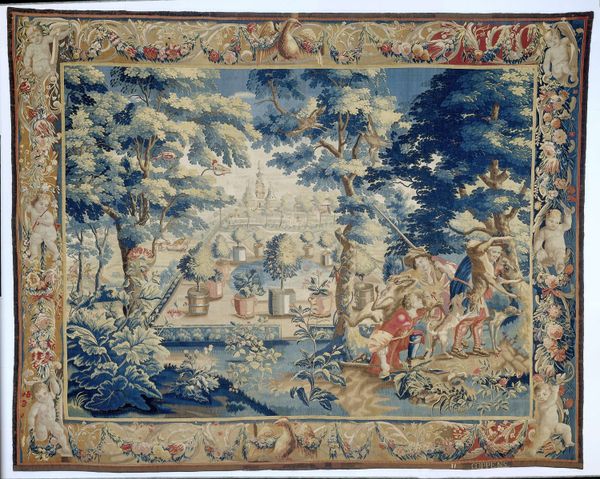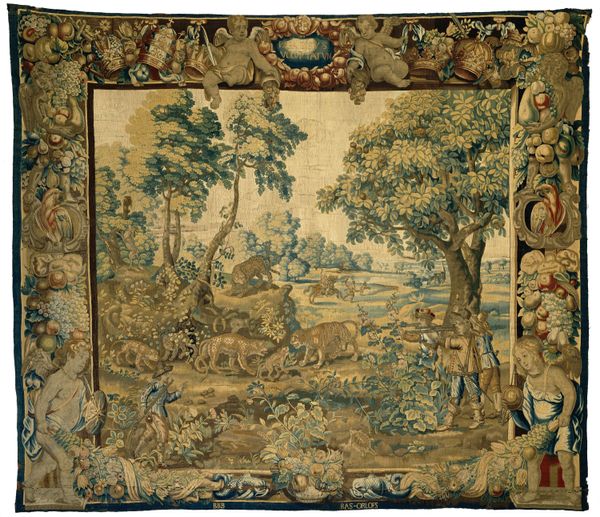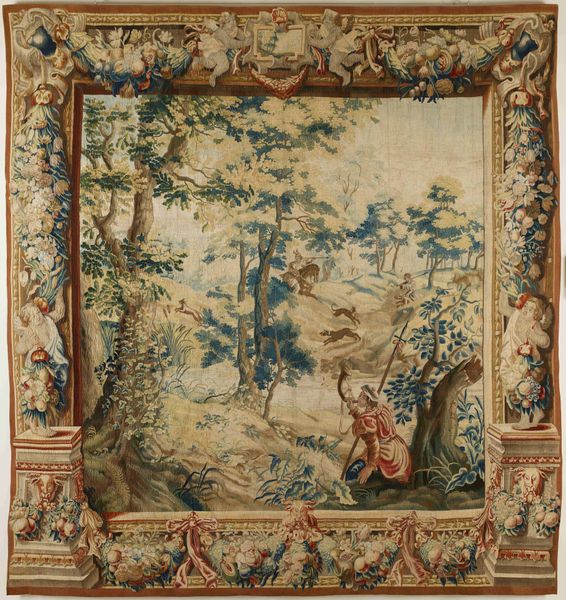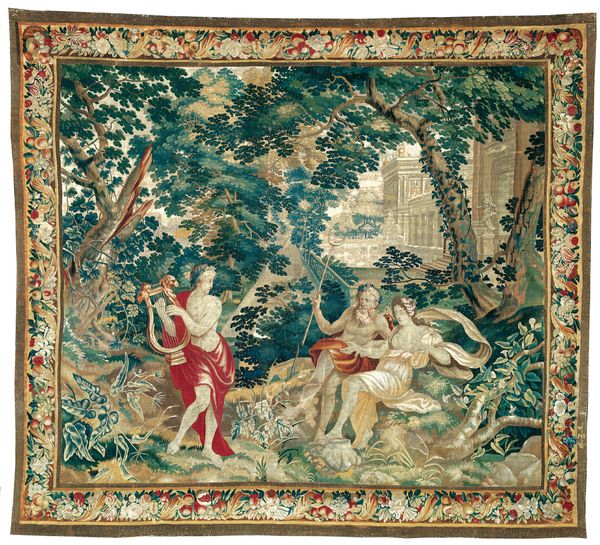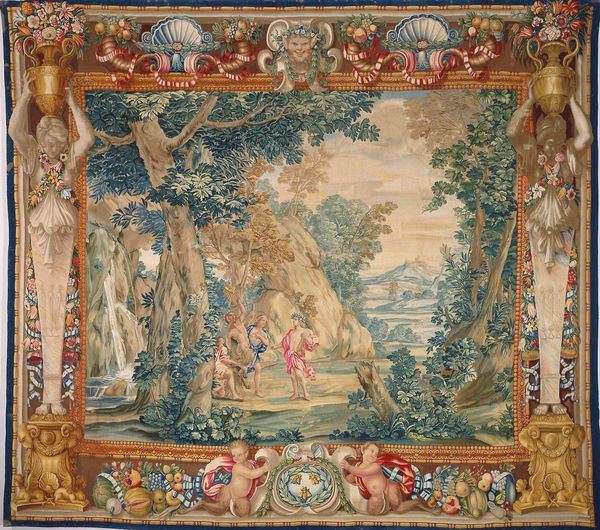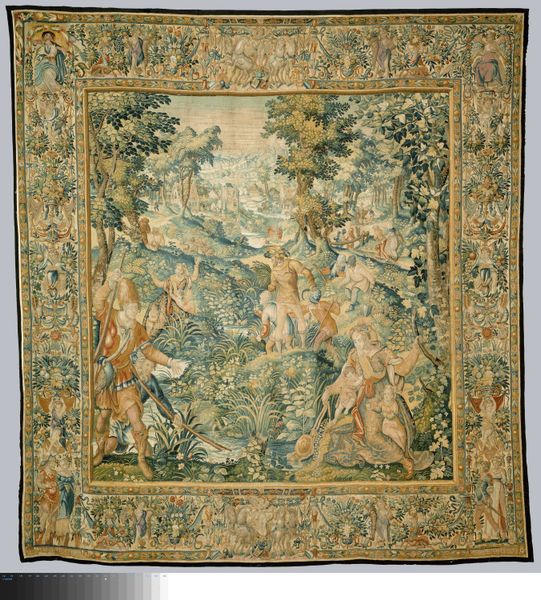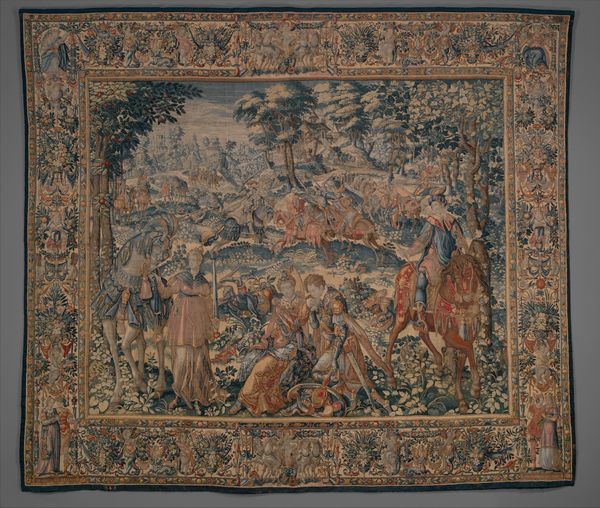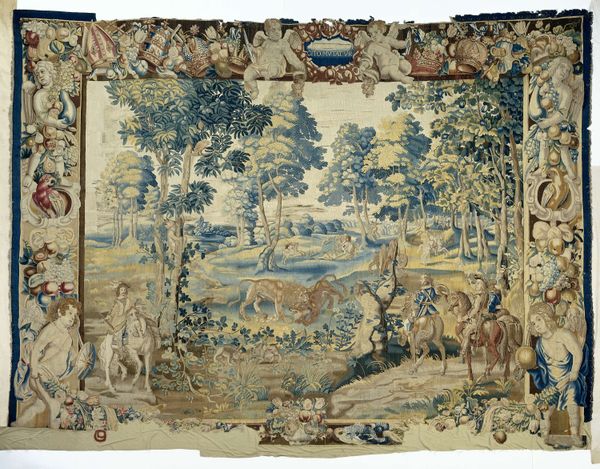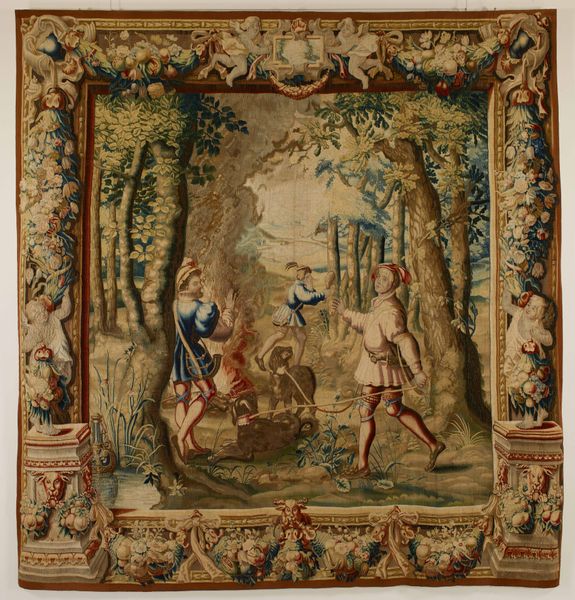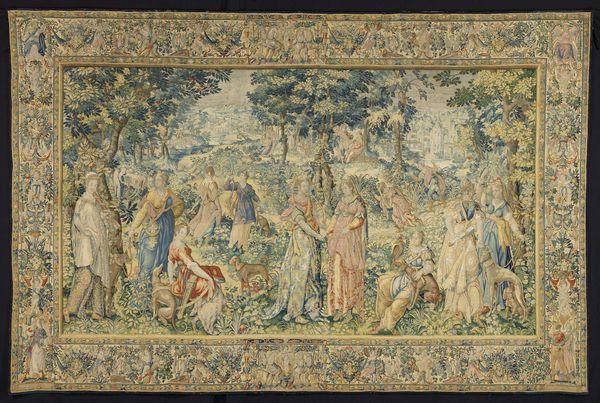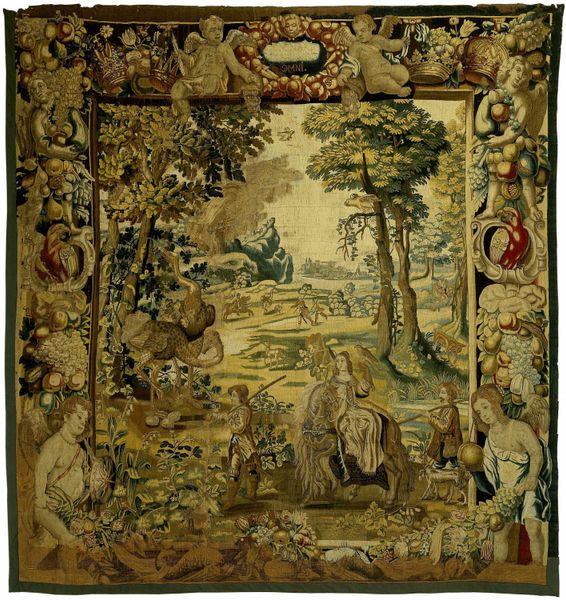
weaving, textile
#
baroque
#
weaving
#
landscape
#
textile
#
figuration
#
oil painting
#
genre-painting
Dimensions: height 356.0 cm, width 497.0 cm
Copyright: Rijks Museum: Open Domain
Curator: Here we have "Parkgezicht met een ruiter en een galant gezelschap," a tapestry from approximately 1685 to 1740, by François Coppens. Editor: Wow, that's quite the scene. Immediately I’m struck by how dense it is with detail; the texture must be amazing up close. A real showcase of textile skill. Curator: Indeed. The Baroque style is quite evident in its emphasis on detail, rich colour and movement. Tapestries like these would have served a specific purpose within elite households. Editor: Function and status, right? More than just decoration. How would tapestries be employed? Curator: Absolutely. They acted as insulation but were also displays of wealth and cultural sophistication. Displaying scenes from mythology, landscapes, or even current events, they were visual narratives meant to impress. This piece offers insight into aristocratic pastimes and ideals. Editor: Makes me think about the labour involved. A piece this size must have taken considerable time and skilled hands to weave. Did the weavers have much creative input? Curator: The degree of artistic agency among the weavers varied, but the design was often pre-determined, either commissioned or selected from existing pattern books. This tapestry speaks volumes about textile production of that period, a merging of artistry and labor that supplied these status pieces. Editor: Thinking about materials...Wool, silk, maybe even some metal threads? The blues seem so dominant, and what does that mean for its production and reception? Curator: Cobalt was expensive but became increasingly popular, so access to quality dyes indicates financial resources, and demonstrates how this choice can subtly shape perception. This weaving would absolutely serve to communicate power and taste through accessible imagery. Editor: Looking closely, it feels interesting to imagine these figures positioned on their small stages interacting with the wider audiences observing their actions and intentions. Curator: A critical consideration for understanding visual representations in relation to wider social behavior during this historical time. Editor: Thanks to its unique construction and perspective on status through textile artistry, it remains captivating to consider today. Curator: Agreed; seeing its presence as both art and a product, shaped by socio-economic and political forces is so key.
Comments
No comments
Be the first to comment and join the conversation on the ultimate creative platform.

